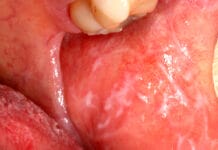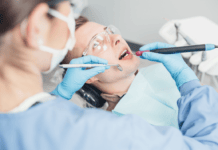Over the past several years, a push for mid-level dental practitioners has been underway to better provide care for at-risk and underserved populations. Mid-level dental practitioners are essentially the equivalent of a nurse practitioner or physician assistant in medicine. States such as Alaska, Washington, and Minnesota are just a few examples of areas where these mid-level practitioners can train and practice.
Although mid-level dental providers are a fairly new concept in the United States, they are not exclusive to this country. For example, in Australia and New Zealand, oral health therapists and dental therapists are mid-level dental practitioners who work alongside both hygienists and dentists in private practices.
Historical Background Behind ‘School Dental Nurses’
In New Zealand, mid-level dental practitioners have been in existence since the 1920s. Seven years prior, the New Zealand Dental Association president proposed a mid-level dental practitioner role to serve younger patients between 6 and 14 years old.1 A few years later, Australian dentists followed in New Zealand’s footsteps. They were frequently referred to as “school dental nurses.”
These pioneer dental practitioners fulfilled the public health order for schools to make dental clinics accessible to all students. In some cases, separate clinics were built for these purposes but not in others; work environments vary from one provider to the next. By the 1990s, dental nurses began to be known as dental therapists.
After receiving a bachelor of oral health degree, dental therapists or oral health therapists can provide both hygiene as well as “dental therapy” services.2 These duties include responsibilities such as filling decay and extracting teeth. However, they do not include more complex dental procedures.
In most scenarios, treatment is restricted to pediatric patients and adolescents. However, dental therapists can also perform pulp capping in both primary and permanent teeth.3 Oral health therapists can also own and operate their own practice in Australia.
In Australia ‒ like the United States ‒ hygienists require a minimum of two years of training or can complete a bachelor’s degree. However, oral health therapists and dental therapists require a bachelor’s degree, oftentimes combining it with an automatic qualification/degree in dental hygiene due to the higher level of education and training required beyond the scope of traditional hygiene.
Dental school nurses briefly made their way across the pond into Canada in 1972.4 Unfortunately, Canadian dentists put up a significant amount of resistance, even though the program was greatly supported by the general public. As such, aspects of the program were eliminated. However, a few hundred professionals still practice today, primarily serving Indian and Innuit populations.
You may have already made the connection that each of the examples above falls under the United Kingdom Commonwealth. So it’s only natural to evaluate dental practitioners in Great Britain. Their robust dental therapy program (previously dental nurses) has been in effect since the 1960s. Graduates of these practitioner programs are allowed to place stainless steel crowns, perform pulp therapy, and extract primary teeth.
Challenges Adopting a Mid-Level Practitioner Program in the United States
The process of establishing licensure across state lines can be treacherous for some dentists. There are additional hoops to jump through whenever transferring or gaining licensure in other areas of the country for dental hygienists. Since each state dental board establishes its regulations for licensure, a hygienist may need to retake certain board exams even if they passed one for previous licensure in another state, regardless of how long they have been in practice.
On top of that, some states limit standard dental hygiene procedures, such as the ability to administer local anesthetic (such as in Texas), creating an inconsistency within the national scope of care. The discrepancies on a state-by-state basis just in terms of dental hygiene licensure make it that much more difficult to even hypothesize a mid-level practitioner program on a national level.
According to the ADHA, the job scope of proposed advanced dental hygiene practitioner (ADHP) roles is similar to that of oral health therapists abroad, including restorative therapies for children, adolescents, and geriatric populations.5 But without a national standard for hygiene scope of care and licensure, it’s highly unlikely that the United States as a whole will adopt a mid-level role in dentistry similar to what we’ve seen in medicine.
That being said, multiple states have already pursued and successfully initiated ADHP programs to provide access to care to underserved populations. These mid-level practitioners require a master’s level degree in addition to their current dental hygiene licensure.
It’s also important to mention the strong pushback against dental therapists in the U.S. dental community. Many American dental practitioners feel that introducing a mid-level practitioner would compromise patient care and place patients in harm’s way, which is why states such as Alabama, Georgia, Mississippi, and Texas do not allow registered dental hygienists to administer local anesthetic (even though it falls within the scope of care in other states.) By potentially allowing trained mid-level therapists to take on procedures such as pediatric extractions and dental restorations, some dentists may not feel that they want to be liable for supervising these practitioners within their practices, regardless of the level of training they receive.
On the other hand, incorporating mid-level practitioners could actually help dentists run more efficient and productive practices. This is especially true if the ADHPs are able to safely perform minimally invasive procedures in their own operatories, while the dentists focus on larger cases, increasing total daily production. While ADHPs can perform both restorative as well as prevention-based services, some thriving practices may find it more effective to have separate RDH and ADHPs based on their patient population, whereas, in others, the ADHP could hypothetically replace the need for an RDH entirely.
The American ADHP concept was originally developed to better meet the needs of underserved populations, such as patients on Medicare and Medicaid or in rural areas where there is a shortage of dental providers. However, 2019 data from the State of Minnesota states that as many as 73% of dental therapists spend their time working in metropolitan areas rather than the at-risk communities, which the ADHP concept was designed to serve.6 And 75% of them spend most of their time on non-dental hygiene-related job duties. While these practitioners appear to have filled a void in mainstream dentistry, it still leaves more to be desired for at-risk communities which they were initially expected to help serve.
What’s the solution? Should ADHPs be restricted to whom they can or cannot treat or where they can practice geographically? Or should we not have ADHPs at all? Ultimately, it’s up to dentists to decide for us. But as long as they predominantly employ ADHPs in municipal settings, there will continue to be underserved communities with a lack of preventative and therapeutic dental care.
Conclusion
We now have over 100 years of evidence that mid-level dental practitioners are an effective and successful part of dental teams in multiple first-world countries. But the majority of them are part of the Commonwealth. With autonomous state dental boards in the U.S., it’s that much more difficult to develop a standardized mid-level dental practitioner role across 50 states, especially since we haven’t yet gotten there with dental hygienists.
Before you leave, check out the Today’s RDH self-study CE courses. All courses are peer-reviewed and non-sponsored to focus solely on high-quality education. Click here now.
Listen to the Today’s RDH Dental Hygiene Podcast Below:
References
- Satur, J. ADOHTA History. Australian Dental and Oral Health Therapists’ Association. https://www.adohta.net.au/history
- Become an Oral Health Therapist. (n.d.). Australian Dental and Oral Health Therapists’ Association. https://www.adohta.net.au/Become-an-Oral-Health-therapist
- Dental Therapist. (n.d.). Australian Dental Association: NSW Branch. https://www.adansw.com.au/Careers/Dental-Therapist
- Institute of Medicine (U.S.) Board on Health Care Services. The U.S. Oral Health Workforce in the Coming Decade: Workshop Summary. Washington (D.C.): National Academies Press (U.S.); 2009. 9, The International Experience. https://www.ncbi.nlm.nih.gov/books/NBK219672/
- The Advanced Dental Hygiene Practitioner. (2006). American Dental Hygienists’ Association: National Health Conference. https://www.nationaloralhealthconference.com/docs/presentations/2006/0502/Wendy%20Kerschbaum%20NOHC%20Presentation.pdf
- Minnesota’s Dental Therapist Workforce. (2019). Minessota Department of Health; Office of Rural Health and Primary Care. https://www.health.state.mn.us/data/workforce/oral/docs/2019dt.pdf











